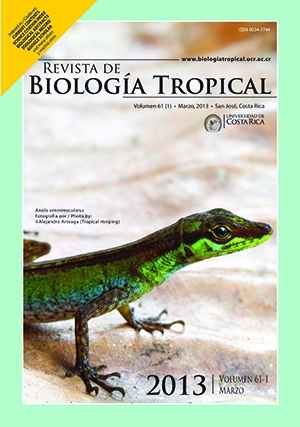Abstract
The palaemonid shrimp Macrobrachium amazonicum shows an unusually large geographic range (ca. 4 000km across) living in coastal, estuarine, and limnic inland habitats of the upper Amazon, Orinoco, and La Plata basins. This raises doubts whether allopatric, ecologically diverse populations belong to the same species. While shrimps from estuarine and Amazonian habitats have been studied in great detail, very little is known about hololimnetic inland populations. In the present study, biological traits related to growth (maximum body size, fresh weight, morphometric relationships) and reproduction (sex ratio; occurrence of male morphotypes; minimum sexable size; minimum size of ovigerous females; fecundity; egg size), were studied in M. amazonicum collected from a pond culture and two natural freshwater habitats (Rio Miranda; Lagoa Baiazinha) in the Pantanal of Mato Grosso do Sul, Brazil. In total, 2 270 shrimps were examined (603 males; 1 667 females, 157 of these ovigerous). Sex ratio (males:females) was at all sampling sites strongly female-biased, ranging from 0.2-0.6. Maximum body size was larger in natural habitats compared to the pond culture, suggesting reduced growth or a shorter life span under artificial mass rearing conditions. Maximum fecundity observed in our material was 676 eggs, reached by the largest female (TL=65mm; Lagoa Baiazinha). A significant difference between slope parameters of linear regressions describing fecundity, either in terms of numbers of eggs laid or of larvae released, in relation to female fresh weight, indicates egg losses. This may be due in part to a 2.4-fold increase in egg volume occurring during the course of embryonic development, while the available space under the abdomen remains limited. Size-weight relationships differed significantly between males and females, indicating sexspecific morphometric differences. Males appear to have a more slender body shape than females, reaching thus lower weight at equal TL. When reproductive and morphometric traits are compared with literature data from estuarine and inland populations living in the Amazon and Orinoco plains, shrimps from the Pantanal show conspicuous peculiarities differing from other populations: (1) maximum body size is far smaller, suggesting shorter longevity; (2) females are consistently larger than males; (3) different male morphotypes are absent; (4) minimum sexable size and (5) minimum size of ovigerous females are smaller. These traits suggest a heterochronic shift (predisplacement) of sexual maturation and r-selection. In summary, our data show biologically relevant differences in life-history traits of shrimps from the Pantanal compared to M. amazonicum populations in other regions. All these differences persist also in long-term cultures maintained under constant conditions. Altogether, our data support the hypothesis that M. amazonicum in the Paraná-Paraguay drainage basin has phylogenetically diverged from allopatric populations that are hydrologically separated by continental watersheds, implying an at least incipient vicariant speciation.##plugins.facebook.comentarios##
Downloads
Download data is not yet available.






